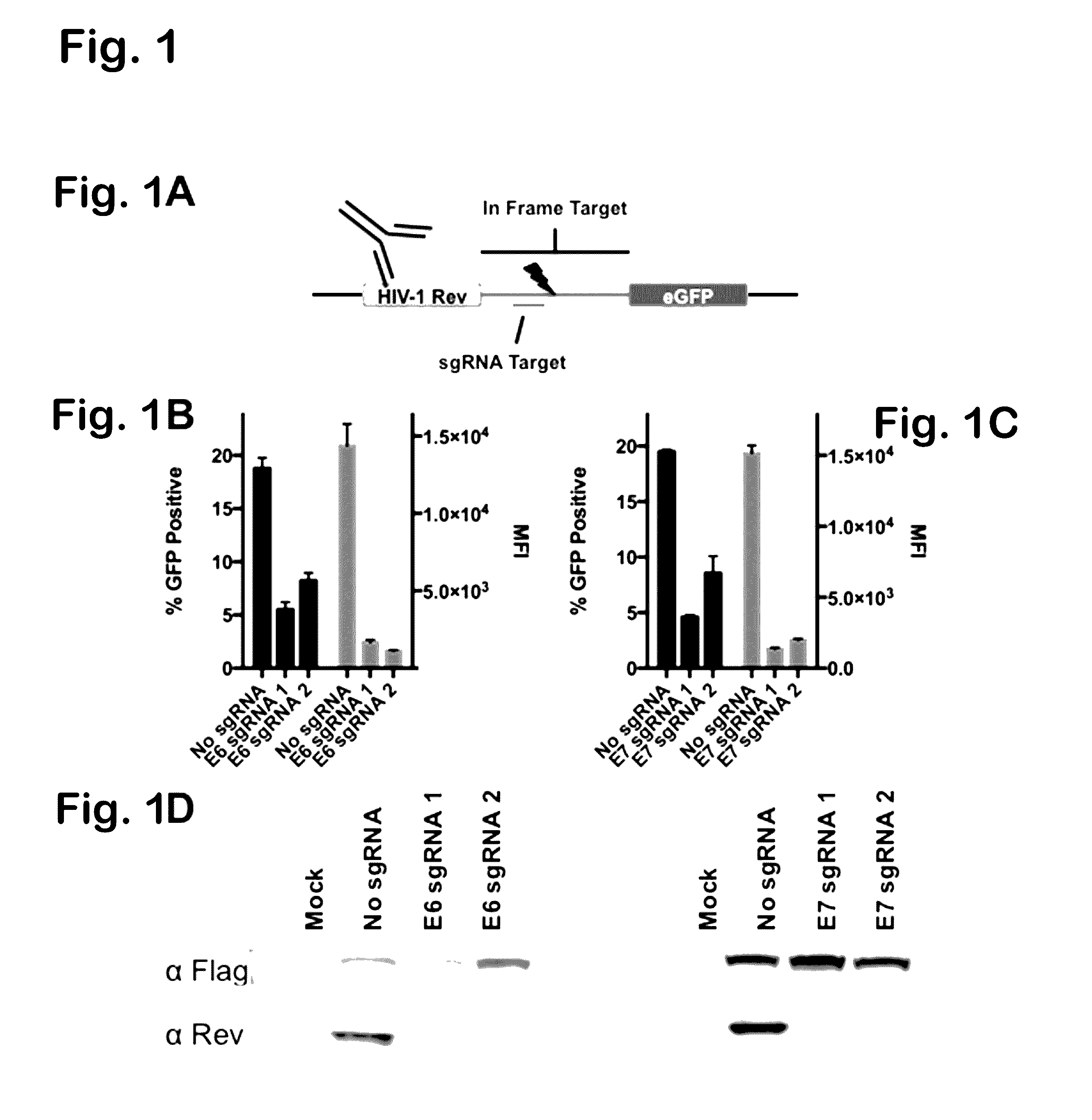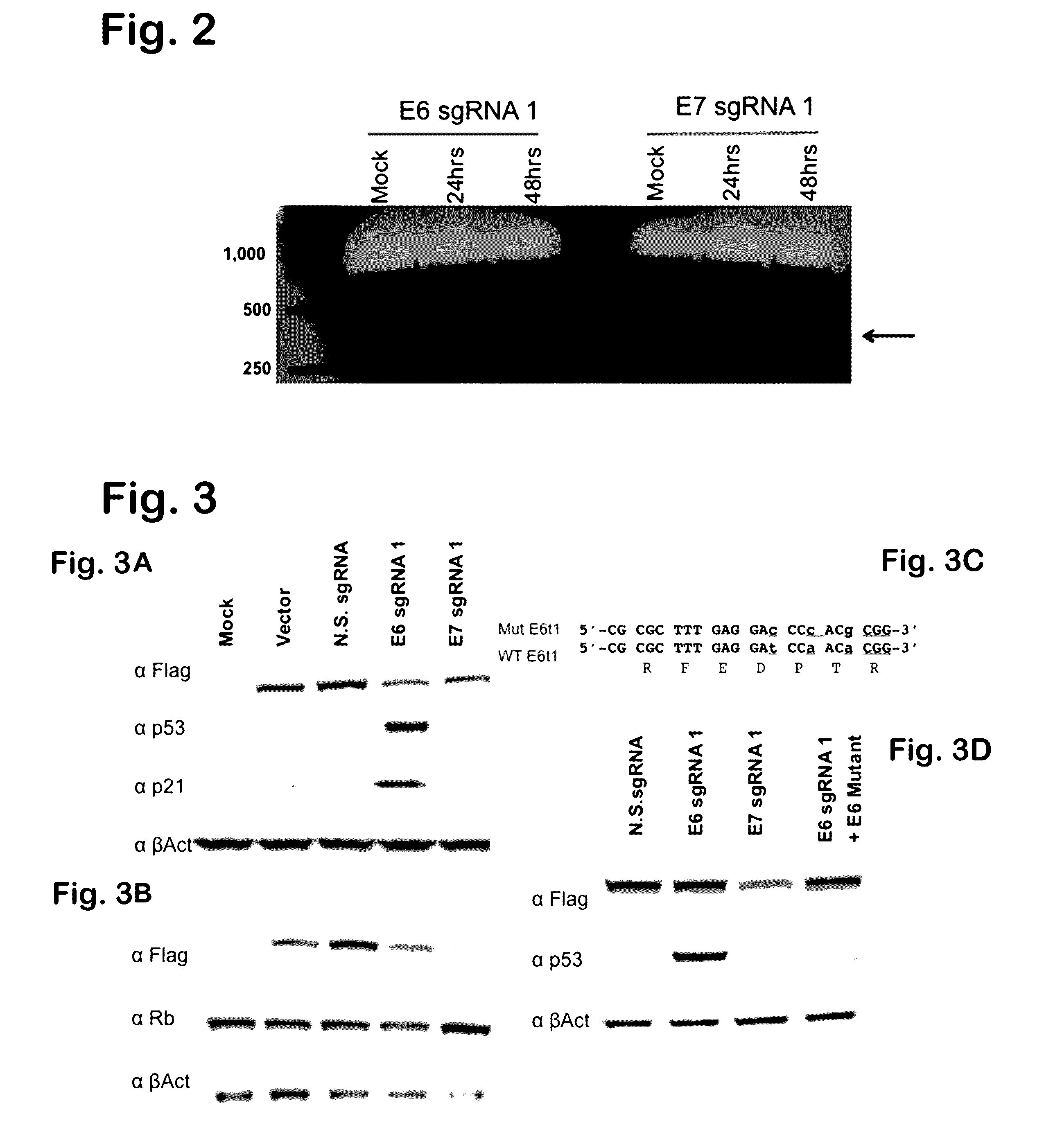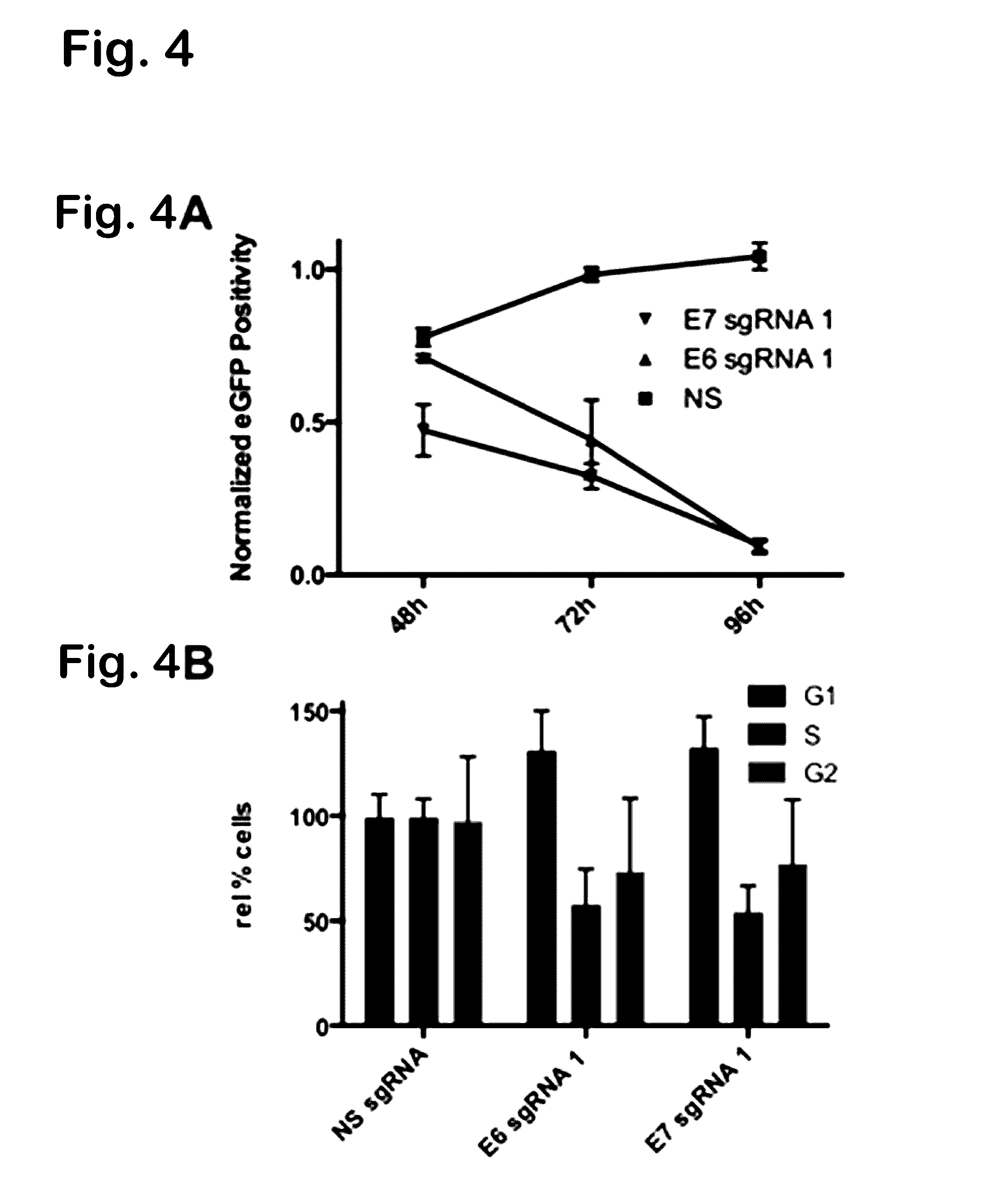Compositions for the inactivation of virus replication and methods of making and using the same
- Summary
- Abstract
- Description
- Claims
- Application Information
AI Technical Summary
Benefits of technology
Problems solved by technology
Method used
Image
Examples
example 1
Design and Use of Constructs Targeting HPV
[0095]CRISPR / Cas9 Constructs and sgRNA Design
[0096]Two pairs of single guide RNAs (sgRNAs) were designed using the ZiFit web application (http: / / zifit.partners.org) to target DNA sequences encoding the amino terminal region of the HPV-18 E6 and E7 ORFs. RNA-guided DNA endonucleases (RGNs) were constructed by cloning HPV specific sgRNAs into the px330 vector (Addgene) expressing Spy Cas9 (Cong et al, 2013). sgRNAs were also cloned into the px458 vector, an alternative version of px330 containing a gfp marker useful for flow cytometric analysis (Ran et al., 2013). RGN function was tested by generating a vector containing either HPV-18 E6 or E7-derived viral DNA targets inserted in frame between an HIV-1 rev gene fragment encoding amino acids 1 to 59 of Rev (Malim et al., 1989) and a 3′ gfp indicator gene. Following co-transfection of the reporter plasmid with a Spy Cas9 / sgRNA expression construct, function was determined by detecting the speci...
example 2
Development and Use of HBV Specific CRISPR / Cas9
Single Guide RNA Design and Lentiviral Vector Production
[0119]Multiple sgRNAs for each HBV DNA target were screened using a dual luciferase indicator assay, essentially as described above. Briefly, Spy Cas9 / sgRNA coexpression constructs based upon pX330 (Gong et al., 2013) were co-transfected into 293T cells at an 8:1 ratio relative to an indicator plasmid expressing a fusion protein consisting of an amino-terminal HIV-1 Rev derived epitope tag, a central target region derived from an HBV open reading frame and lastly a carboxy-terminal firefly luciferase (FLuc) indicator gene. A Renilla luciferase (RLuc) expression plasmid was also co-transfected as an internal control. Transfections were analyzed at 72 h post-transfection by Promega dual luciferase assay and Western blot for the expression of the encoded Rev-target-Fluc fusion protein to confirm the specific knockdown of the DNA target. The HBV DNA targets for the sgRNAs are depicted ...
example 3
RGN Cleavage of HSV or HBV Results in DNA Episome Elimination From Culture
[0138]To demonstrate whether Cas9 could target viral episomal DNA, SPCas9 was used to target two essential viral genes, one encoding HSV-1ICP0 and the other HBV reverse transcriptase in the context of the reporter assay detailed in FIG 1A. In contrast to the expected reduction in both GFP intensity and frequency predicted by the rate of mutagenesis induced by non-homologous end joining, we observed a binary result interpretable as elimination of the episome from many cells in culture. This was the case for episomes based on either an SV40- or EBV-derived viral origin of replication, as shown again by Western blot using an antibody specific to Rev (FIG. 10). This episome elimination phenomenon is novel and advantageous, and both HSV-1 and HBV gRNAs can be combined to target multiple viral genes simultaneously, thus enhancing the desired inhibitory effect.
PUM
| Property | Measurement | Unit |
|---|---|---|
| Composition | aaaaa | aaaaa |
Abstract
Description
Claims
Application Information
 Login to View More
Login to View More - R&D
- Intellectual Property
- Life Sciences
- Materials
- Tech Scout
- Unparalleled Data Quality
- Higher Quality Content
- 60% Fewer Hallucinations
Browse by: Latest US Patents, China's latest patents, Technical Efficacy Thesaurus, Application Domain, Technology Topic, Popular Technical Reports.
© 2025 PatSnap. All rights reserved.Legal|Privacy policy|Modern Slavery Act Transparency Statement|Sitemap|About US| Contact US: help@patsnap.com



